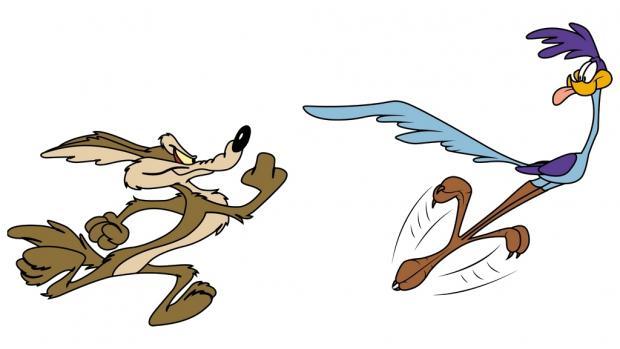Coyote VS Road Runner

The Coyote was chasing his nemesis, the Road Runner, from the starting point . He began running towards his prey along the straight road eastward for 90 meters before the Road Runner made 180 degrees turn and sprinted in the opposite direction. The Coyote followed in pursuit and ran westward for 80% distance of the first track before the Road Runner made the same turn and took off in the opposite direction again. Track after track, the two animals kept on running in the same pattern, and the elapsed distance was 80% of the previous track.
As the number of tracks was approaching infinity , how far (in meters) would the Coyote be away from the original point ?
The answer is 50.
This section requires Javascript.
You are seeing this because something didn't load right. We suggest you, (a) try
refreshing the page, (b) enabling javascript if it is disabled on your browser and,
finally, (c)
loading the
non-javascript version of this page
. We're sorry about the hassle.
Let T n denote the distance of the n t h track.
Then we can set up a geometric progression of the series as the following:
T 1 = 9 0
T 2 = 9 0 × ( 1 0 0 8 0 ) = 7 2
T 3 = 9 0 × ( 1 0 0 8 0 ) 2
v d o t s
T n = 9 0 × ( 1 0 0 8 0 ) n − 1
However, since the distance is also classified as eastward and westward, we can mark "eastward" direction as "+" and "westward" as "-" from point A .
In other words, T n = ( − 1 ) n − 1 ( 9 0 × ( 1 0 0 8 0 ) n − 1 )
Now for eastward track, we can see from T 1 to T 3 that the distance is reduced to ( 1 0 0 8 0 ) 2 = 1 0 0 6 4 , which also applies for the next n + 2 term in the eastward series, and the progression is the same as in the westward series.
Therefore, the total distance traveled eastward = 1 − r T 1 = 1 − 1 0 0 6 4 9 0 = 2 5 0 meters.
Then, the total distance traveled westward = 1 − r T 2 = 1 − 1 0 0 6 4 7 2 = 2 0 0 meters.
As a result, as the number of tracks reach infinity, the Coyote's distance from the starting point A = 2 5 0 − 2 0 0 = 5 0 meters eastward.